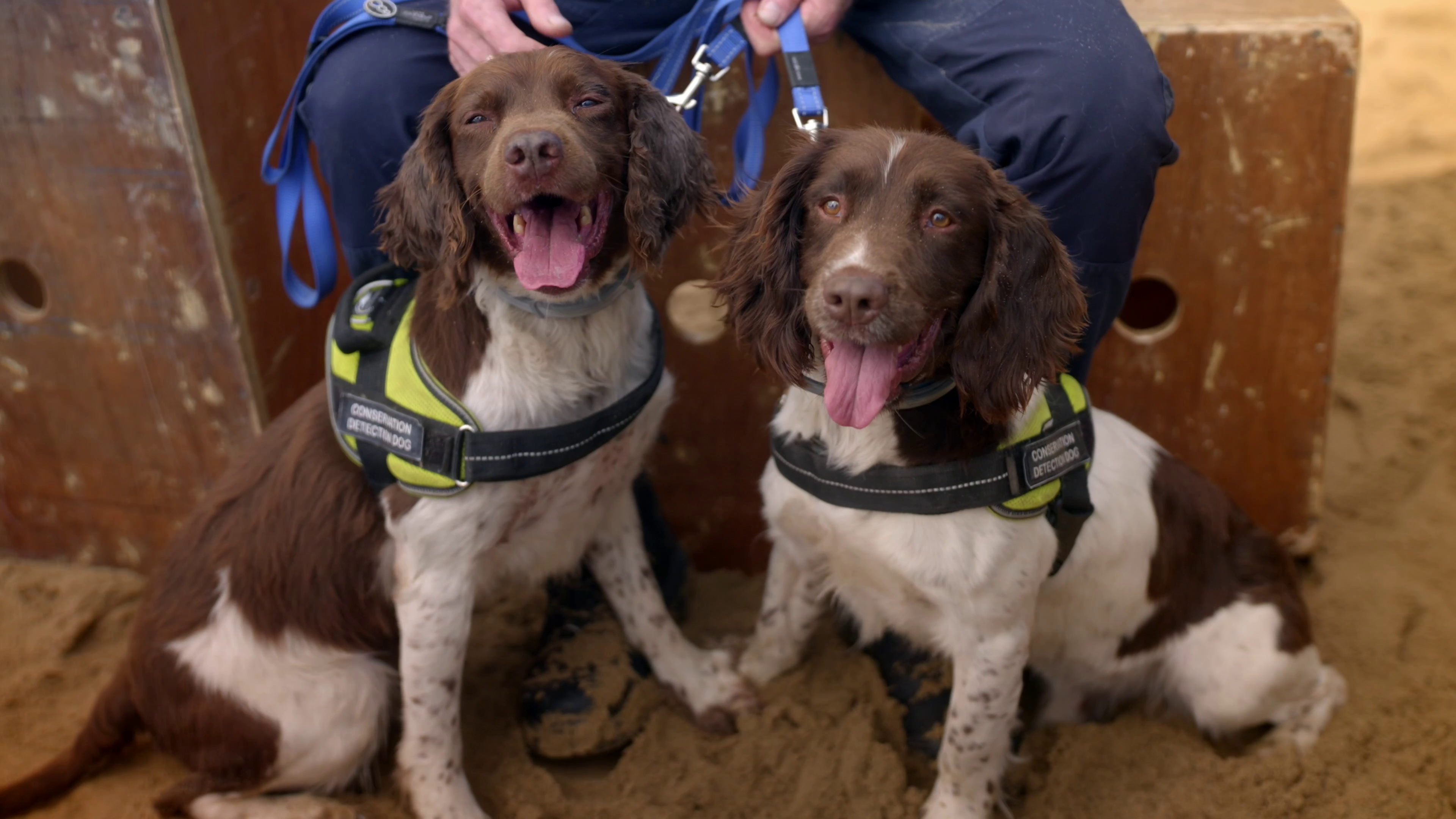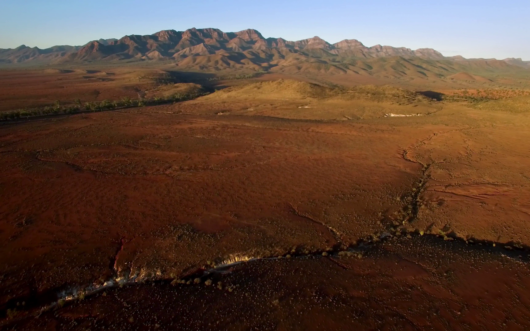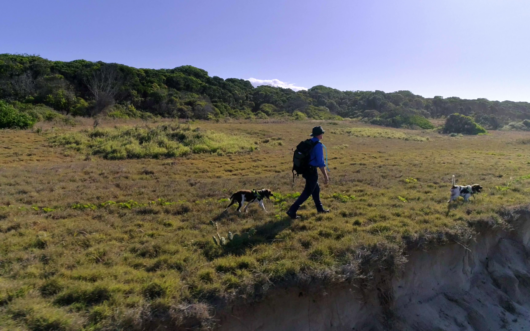Bring biodiversity, endangered species, and innovative conservation science into your classroom.
Explore how conservation teams in Australia are training dogs to protect wildlife by locating invasive foxes and tracking endangered koalas. This educator guide supports classroom discussion, NGSS-aligned learning, and hands-on opportunities for student engagement.
GRADES
9 – 12+
SUBJECTS
Biology, Storytelling, Ecology
Episode Overview
Canine Conservationists follows teams in Australia training highly skilled dogs to help protect wildlife. These canines use their extraordinary sense of smell to tackle two pressing ecological challenges. Along coastal beaches, dogs are deployed to detect invasive foxes, predators that devastate vulnerable sea turtle nests before hatchlings can make it to the ocean. In forests and woodlands, other teams work with dogs to track endangered koalas, whose populations are shrinking due to habitat fragmentation, urban expansion, and increasingly frequent bushfires.
The film highlights how these canine-human partnerships bridge the gap between science and on-the-ground conservation. Trainers, scientists, and local communities collaborate to harness the dogs’ natural abilities, using non-invasive methods that leave minimal impact on wildlife and habitats. By combining keen canine noses with scientific expertise, the film shows how people and dogs are working together to protect endangered species and restore balance to delicate ecosystems.
Discussion Questions
- ((Before the film) List five endangered species and come up with ideas for why each species is endangered. Identify any similarities among the causes you identified.
- What are some characteristics that would allow a species to become invasive?
- How does habitat fragmentation threaten species like the koala?
- How might conserving specific species, such as loggerheads and koalas, increase overall ecosystem health or stability?
- What are some characteristics of dogs that make them such effective conservation partners?
Key Concepts
- Habitat Fragmentation: The division of a large, continuous habitat into smaller, disconnected patches, through natural disasters like fire or human activity like road-building.
- Invasive Species: Life forms indigenous to a region – known as native species – have over time reached an equilibrium in their predator-prey and other interactions, resulting in a balanced ecosystem. Invasive species upset this balance. These include invasive pests like the spotted lanternfly and red fire ant that expand into territories where they don’t have natural predators.



